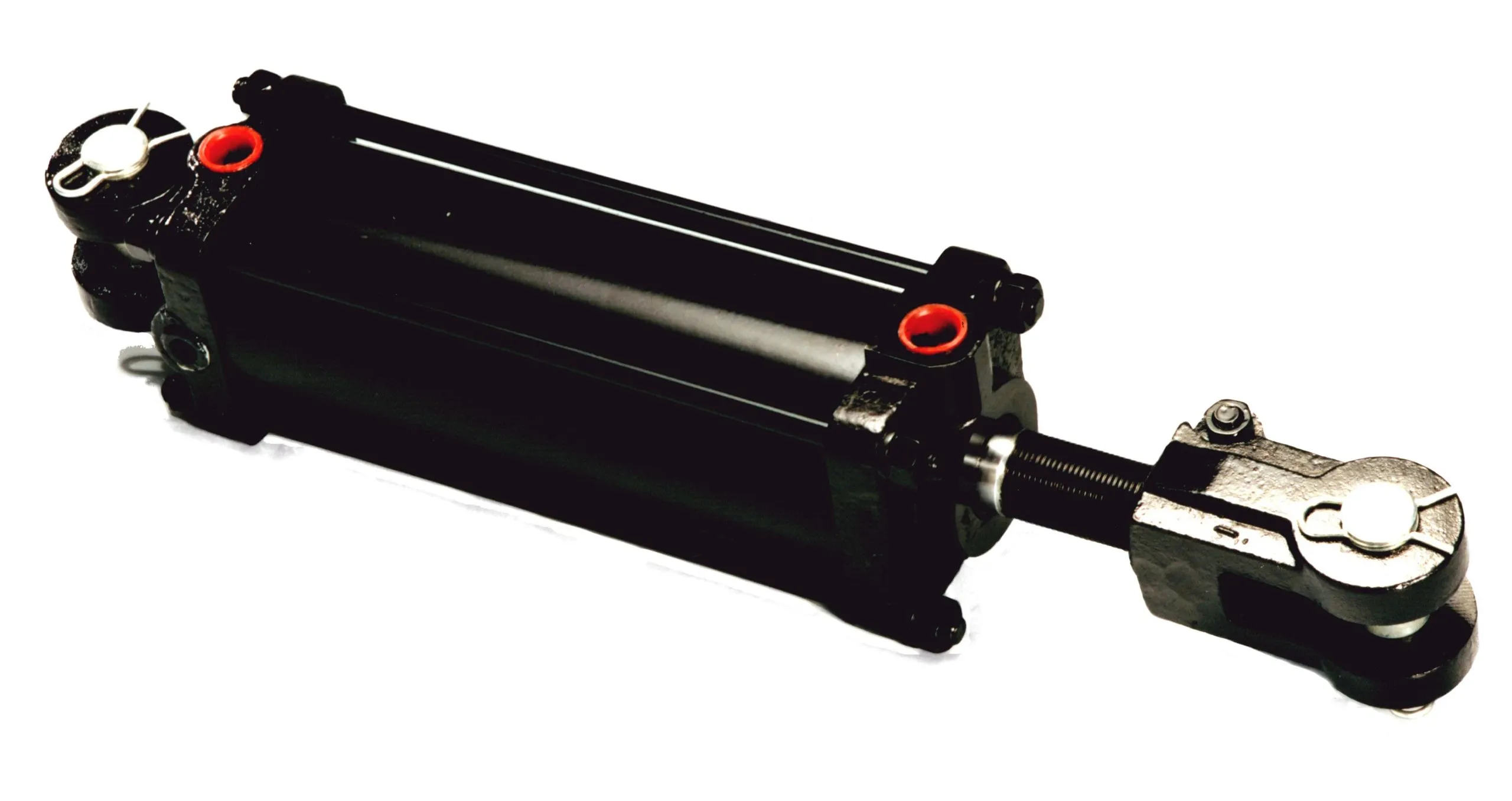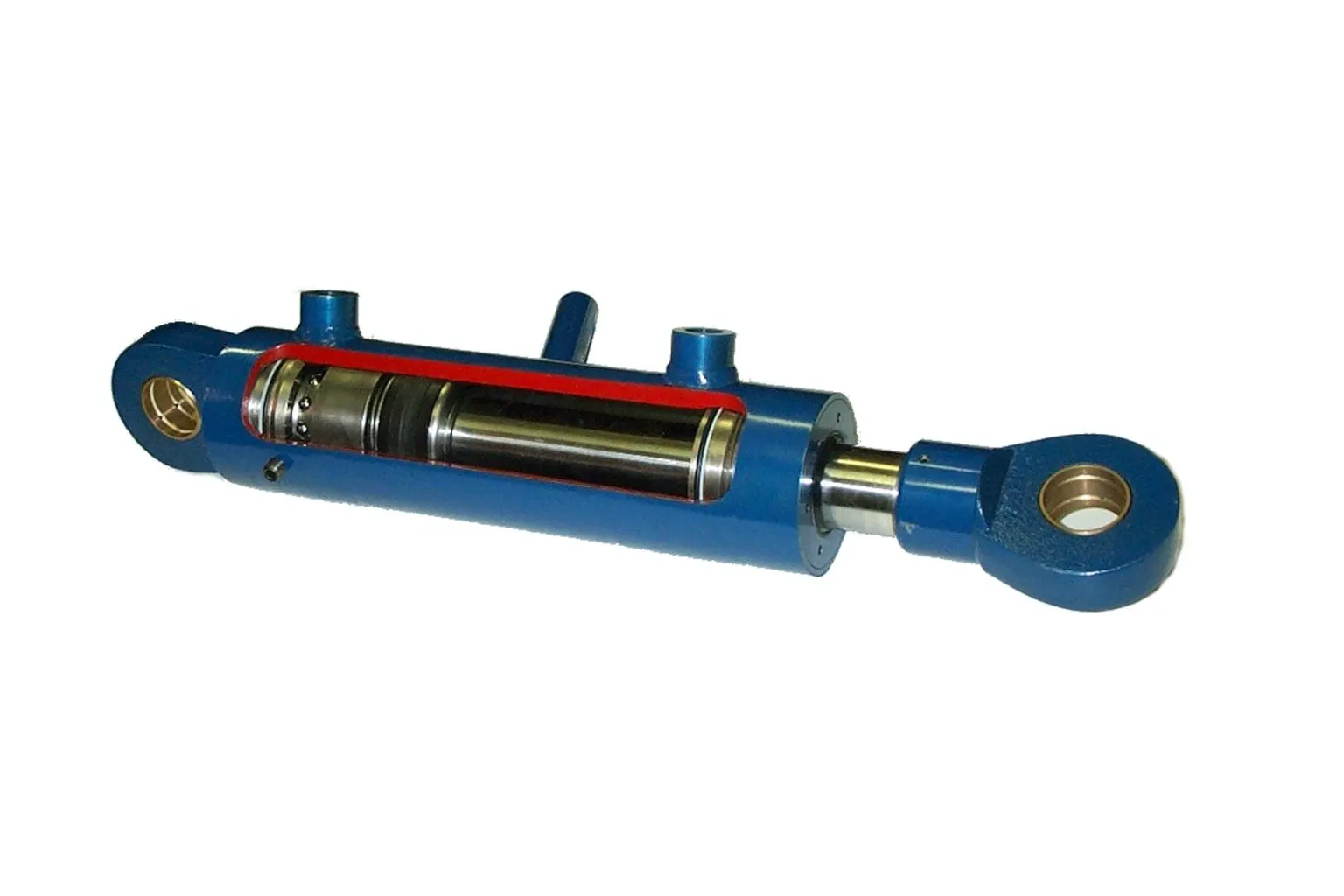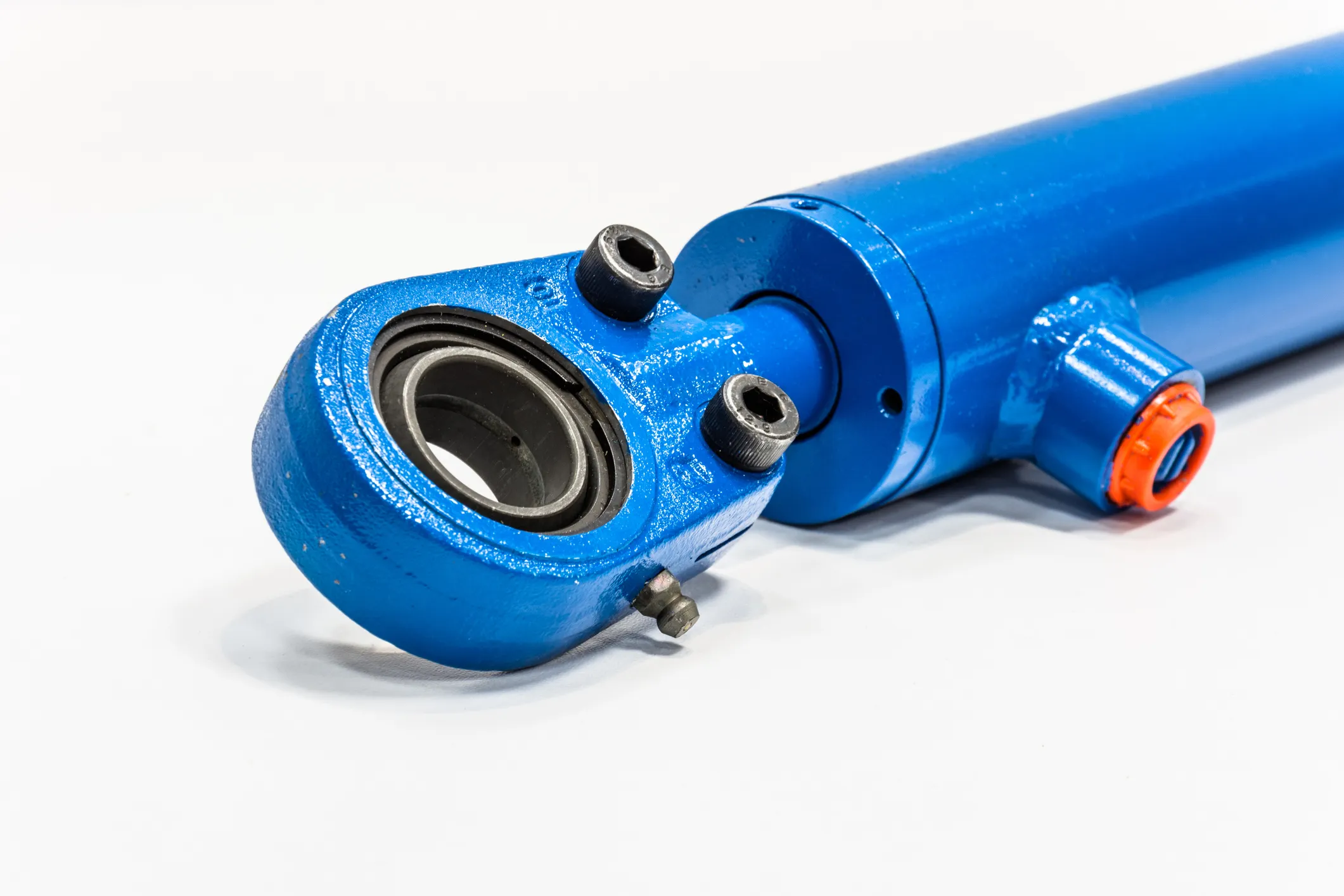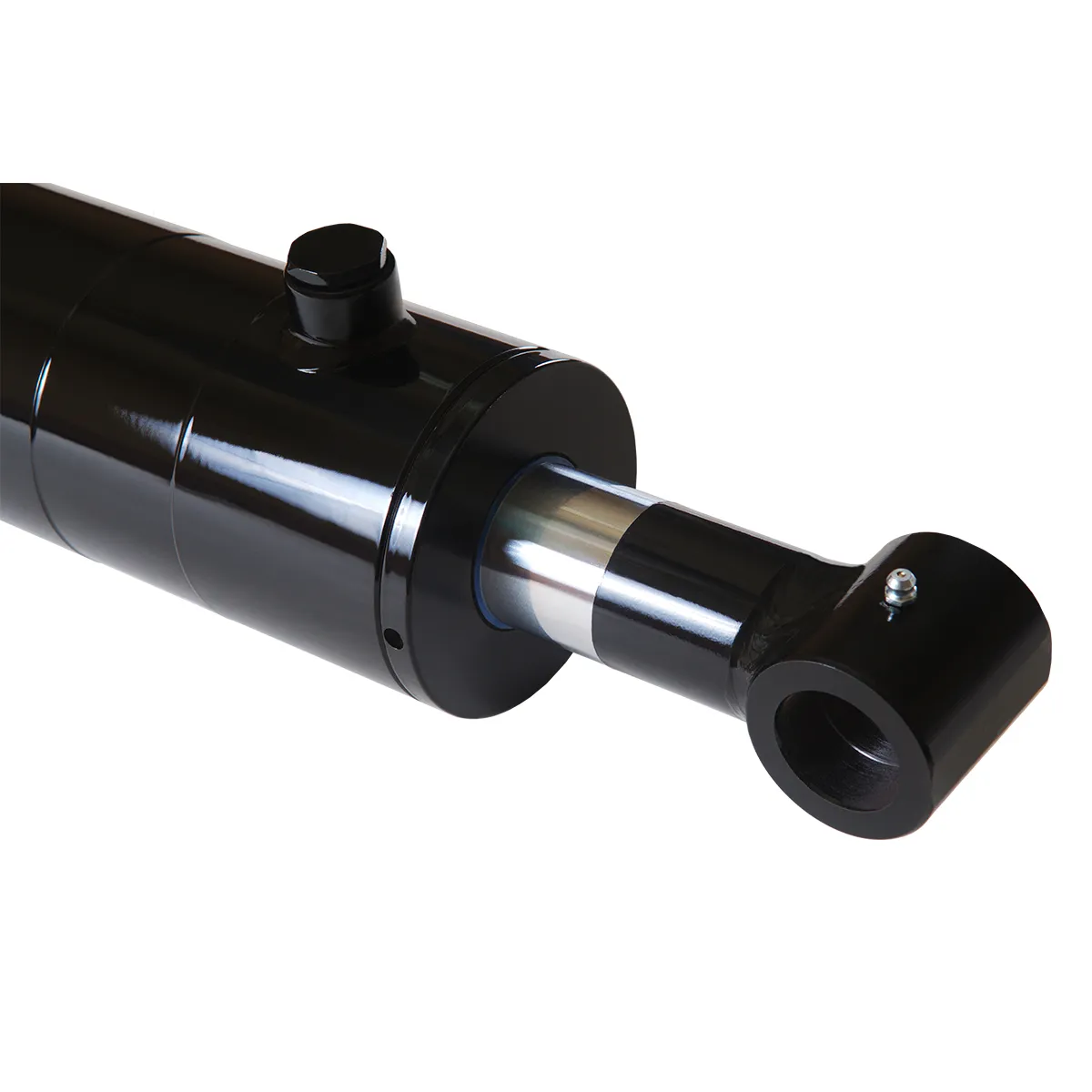Unlocking the Potential of Locking Single-Acting Hydraulic Cylinders
Introduction
When it comes to heavy machinery, safety and reliability are paramount. This is where the locking single-acting hydraulic cylinder plays a crucial role. Designed to work under hydraulic pressure in one direction and equipped with a locking function to prevent movement in the absence of pressure, these cylinders are essential components in various industrial applications.
Design and Construction Characteristics
Locking Mechanism – Safety

The main feature of the locking single-acting hydraulic cylinder is its locking mechanism, which ensures the piston remains in a secure position even when hydraulic pressure is lost. This mechanism can be either mechanical or hydraulic, providing an extra layer of safety to prevent accidental retractions.
Variety
The design of the locking mechanism can be customized to suit specific applications, with options such as spring-loaded locking devices, pin locks, or other forms of mechanical locks. This versatility makes locking single-acting hydraulic cylinders adaptable to a wide range of equipment and machinery.
Compact Structure – Space Optimization
These cylinders are typically designed to be compact, making them ideal for use in environments with limited space. Their precise manufacturing includes high-precision machining of components to ensure a tight fit and optimal sealing performance, minimizing the risk of leakage.
Assembly Process
Specialized assembly by professional technicians is crucial to ensure the correct installation and calibration of individual components. After assembly, each hydraulic cylinder undergoes a pressure test to verify its performance and tightness, guaranteeing reliability in operation.
Working Principle
The locking single-acting hydraulic cylinder operates using a single-acting mechanism that extends the cylinder when hydraulic oil is pumped into the chamber. The retraction of the piston is achieved through a locking mechanism that holds the position under load, ensuring safety even if hydraulic pressure is lost.
Types and Configurations
There are three main types of locking single-acting hydraulic cylinders, each offering specific configurations to meet diverse industrial needs. These variations provide flexibility in applications ranging from construction equipment to manufacturing processes and transportation systems.
Benefits
Enhanced Security
The locking feature minimizes the risk of accidental retractions, enhancing operator safety in high-pressure environments.
Reliability
These cylinders are designed to withstand heavy loads and harsh conditions, ensuring consistent performance and operational efficiency.
Simplicity
Easy to operate and maintain, locking single-acting hydraulic cylinders are user-friendly and suitable for a wide range of applications, making them a popular choice in various industries.
Application Scenarios
Construction Equipment
Commonly used in cranes, hoists, and lifts to securely hold heavy objects in place during operations.
Manufacturing
Utilized in presses to maintain pressure and fix materials during forming processes, ensuring precise results.
Transportation
Found in stabilizers and jacks for vehicles to ensure stability and safety during maintenance or transportation activities.
Design Considerations and Selection Criteria
Bearing Capacity
Understanding the load-bearing capacity of locking single-acting hydraulic cylinders is essential to ensure optimal performance and safety in operation.
Sealing and Durability

The quality of seals and materials used in construction directly impacts the longevity and reliability of these cylinders under varying environmental conditions.

Maintainability
Easy maintenance and access to components for repair or replacement play a key role in the overall performance and lifecycle of locking single-acting hydraulic cylinders.
Sealing and Lubrication

Proper sealing using high-quality materials such as piston seals and rod seals, along with regular lubrication, is crucial to enhance wear resistance and prevent leaks in locking single-acting hydraulic cylinders.
Regular Inspection and Preventive Maintenance
Implementing routine inspections and maintenance measures is essential to ensure the continued performance and longevity of locking single-acting hydraulic cylinders. Regular checks, lubrication, and seal replacements are key to preventing potential failures.
Installation Guide
Follow these steps for correct installation of locking single-acting hydraulic cylinders to ensure optimal performance and safety:
- Secure mounting brackets to hold the cylinder in place.
- Properly align the cylinder to avoid misalignment issues.
- Check for leaks and perform a pressure test before operation.
Maintenance Tasks
Three essential maintenance tasks to maximize the performance and lifespan of locking single-acting hydraulic cylinders include regular inspection, proper lubrication, and seal replacement. Following these tasks diligently can prevent potential issues and ensure smooth operation.
Safety Considerations and Environmental Factors
Adhering to safety protocols and considering environmental factors when using locking single-acting hydraulic cylinders is crucial to prevent accidents and minimize impact on the surroundings. Proper training and maintenance practices are essential for safe operation.
Fault Diagnosis and Common Problems
Identifying common issues and diagnosing faults in locking single-acting hydraulic cylinders is essential for timely repairs and maintenance. Understanding the root causes of problems and implementing effective solutions can prevent downtime and ensure operational efficiency.
Unit Power Considerations
The unit power of locking single-acting hydraulic cylinders plays a critical role in determining their performance and efficiency. Factors such as cylinder diameter, stroke length, operating pressure, piston speed, and load conditions all influence the power output and overall functionality of these cylinders.
Optimizing Power Unit
Optimizing the power unit of locking single-acting hydraulic cylinders can yield numerous benefits, including improved efficiency, energy savings, and enhanced reliability. Proper power management and design optimization can maximize the operational capabilities of these cylinders.
Questions and Answers
How does the locking mechanism in a single-acting hydraulic cylinder work?
The locking mechanism in a single-acting hydraulic cylinder prevents the piston from retracting under load, ensuring safety even in the absence of hydraulic pressure.
What advantages do locking single-acting hydraulic cylinders offer over standard cylinders?
Locking single-acting hydraulic cylinders provide enhanced security, reliability, and simplicity in operation compared to standard cylinders, making them ideal for heavy-duty applications.
In what applications are locking single-acting hydraulic cylinders commonly used?
Locking single-acting hydraulic cylinders are commonly used in construction equipment, manufacturing processes, transportation systems, and aviation landing gear systems to ensure safe and reliable operation.
Long-Tail Keywords
Heavy-Duty Locking Single-Acting Hydraulic Cylinder
This long-tail keyword emphasizes the robust and secure nature of locking single-acting hydraulic cylinders designed for heavy machinery applications.
Precision Locking Mechanism for Heavy Machinery
Highlighting the precision and reliability of the locking mechanism in single-acting hydraulic cylinders used in heavy machinery operations.
Customized Solutions for Industrial Hydraulic Cylinders
Emphasizing the tailored and adaptable nature of locking single-acting hydraulic cylinders for diverse industrial applications, offering customized solutions for specific needs.
Our Company
As a leading hydraulic cylinder replacement manufacturer, our company offers a comprehensive product line and customized services to meet the needs of domestic and international markets. With a focus on quality, professionalism, and after-sales support, we strive to deliver innovative solutions for heavy machinery applications.
Author: lyl
